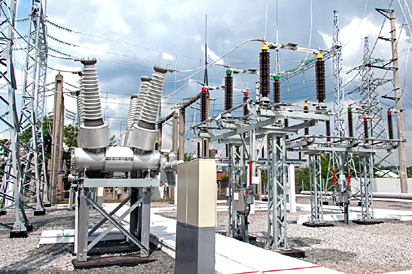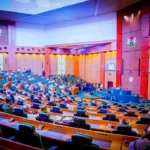At least six National Integrated Power Projects (NIPP) Generation Companies (GenCos) and 22 power substations built and operated between 2015 and now, have significantly driven improvement on the national electricity grid to the 5,800 megawatts (MW) highest peak energy recorded in March 2021.
This is according to the latest NIPP report on power projects execution since 2015, obtained from the Niger Delta Power Holding Company (NDPHC) by Daily Trust. The NIPP is an intervention vehicle warehoused in NDPHC and owned by the federal, state and local governments.
- CBN tasked on funding road transport dev’t
- Insecurity: Attahiru, other officers’ death has increased our problem – Buhari
In 2015, the power grid hovered between 4,500 megawatts (MW) enabled by the commissioning and utilisation of the Geregu, Omotosho, Olorunsogo, Alaoji, Calabar and Ihovbor NIPP GenCos that added nearly 1,000MW to the grid. However, the grid continued to rise with all-time peak electricity reaching 5,801.60MW as of March 2021, according to the statistics from the Independent System Operations (ISO) arm of the Transmission Company of Nigeria (TCN).
NDPHC started the NIPP intervention with the first phase in power generation. It began to build 10 power GenCos known as the “The Big Ten” around gas-producing states including Ondo, Ogun, and Kogi states. However, until 2015, some of them were still ongoing.
The second phase was then launched from 2015 to include intervention projects focusing on transmission, distribution, and renewable energy towards meeting NDPHC’s mandate of ‘Lighting the Nation’.
Currently, there are six power GenCos producing about 3,400MW electricity in the national grid while the four other GenCos are ongoing. Even among the four, some of its turbines have been commissioned and operational since 2015.
Analysis of the report indicates that the NIPP intervention in the transmission section of the power sector value chain, NDPHC has completed 22 substations comprising 10 units of 330/132 kilovolts (kV) level and 12 units of 132/33kV substations. It has also completed 2,194 kilometres of 330kV power transmission line and 887km of 132kV transmission lines. These infrastructures since 2015, have added 5,590MVA energy supply capacity at the 330kV level and 3,793MVA at the 132kV level.
To promote renewable and clean energy, the NIPP in the second phase became a major driver of the federal government’s energy mix by 2030 known as Vision 30-30-30) which seeks to make renewable energy to be at least 30 per cent of the energy grid by 2030.
While it has installed 20,000 Solar Home Systems (SHS) in some northern states, the NIPP is delivering a huge part of the ongoing five million SHS to households nationwide under the Economic Sustainability Plan (ESP).
There is also intervention in the gas sector towards solving the major challenges of the power plants which is the availability of gas-to-power. According to the Managing Director of NDPHC, Mr Chiedu Ugbo, in an interview with Daily Trust, the company is achieving this through the Fuel & Gas/Public Private Partnership (PPP) model. It created a department for this to spearhead its gas pipelines and feed stock connecting all the 10 NIPP GenCos.
In terms of power distribution, the report said the NIPP intervention has seen the completion of over 360 NIPP injection substations with a combined capacity of about 3,540MW. To complement these substations, NDPHC has also built about 2,600km of 11kV power distribution lines and 4600km of 33kV distribution lines which directly supply electricity to transformers in residential areas.
There have also been 296 Appropriated Distribution Projects, which included injection substations, 1924 of 33kV lines, 4600km of 11kV line and other infrastructure.
“NDPHC has also increased its distribution capacity with the installation of 25,900 Completely Self-Protected (CSP) transformers across the country,” added Mr Ugbo.
In spite of these achievements that have helped to improve the national grid operations, the report highlighted threats to the infrastructure especially at the power distribution level.
“Some of the challenges NDPHC has met in distribution include theft of equipment and infrastructure, vandalism, lack of cooperation from Distribution Companies (DisCos).
The others are community issues regarding land and Right of Way (ROIs), vehicular accidents that have damaged some power infrastructure and the rising insecurity across facility areas,” it stated
In a comment to evaluate the viability of the NIPP interventions to Nigerian electricity consumers, the President, Nigeria Consumer Protection Network (NCPN), Barrister Kunle Kola Olubiyo, said the essence of the power sector privatization exercise concluded in November 2013 was to promote competitive economy and inclusive growth by private sector drivers.
He however said despite this, the sector has not attained such viability, and so there was the need for the government to deepen the interventions through NIPP.
“In spite of all the tremendous milestone achievements by NIPP/NDPHC, there are major areas of impediments on the full realisation of the lofty ideals of NIPP as championed by the management of NDPHC.”
Mr Olubiyo said some of these challenges include the delay in taking over projects by the DisCos which should be captured in their Capital Expenditure (CAPEX).
He also said the delay in the implementation of the Eligible Customers regulation by the Nigerian Electricity Regulatory Commission (NERC) was a hindrance.
“With the huge power assets that NIPP has provided, the Manufacturers Association of Nigeria (MAN) and other dedicated power users can decide to connect to the NIPP plants and facilities directly and enjoy uninterrupted power supply, but this is being delayed.”
Another challenge for the NDPHC is funding, which according to him, should be raised by the equity stakeholders (federal, state and local governments) for more power sector projects.
“The leadership of the power sector will also need to address the low tariff for NIPP Plants and the low load (energy) dispatch of the available units from TCN. Consumers are looking for more electricity, why should energy from NIPP GenCos be restricted? Olubiyo queried.

 Join Daily Trust WhatsApp Community For Quick Access To News and Happenings Around You.
Join Daily Trust WhatsApp Community For Quick Access To News and Happenings Around You.


